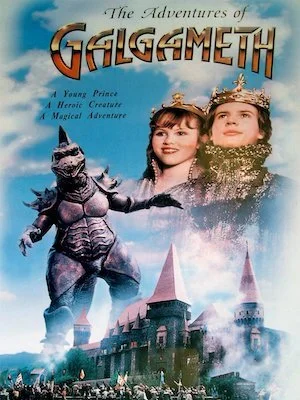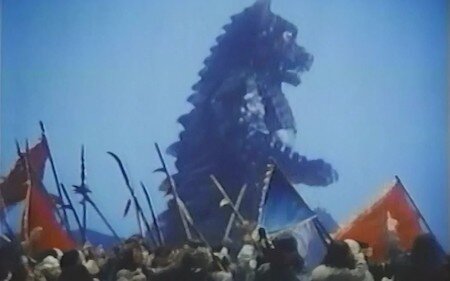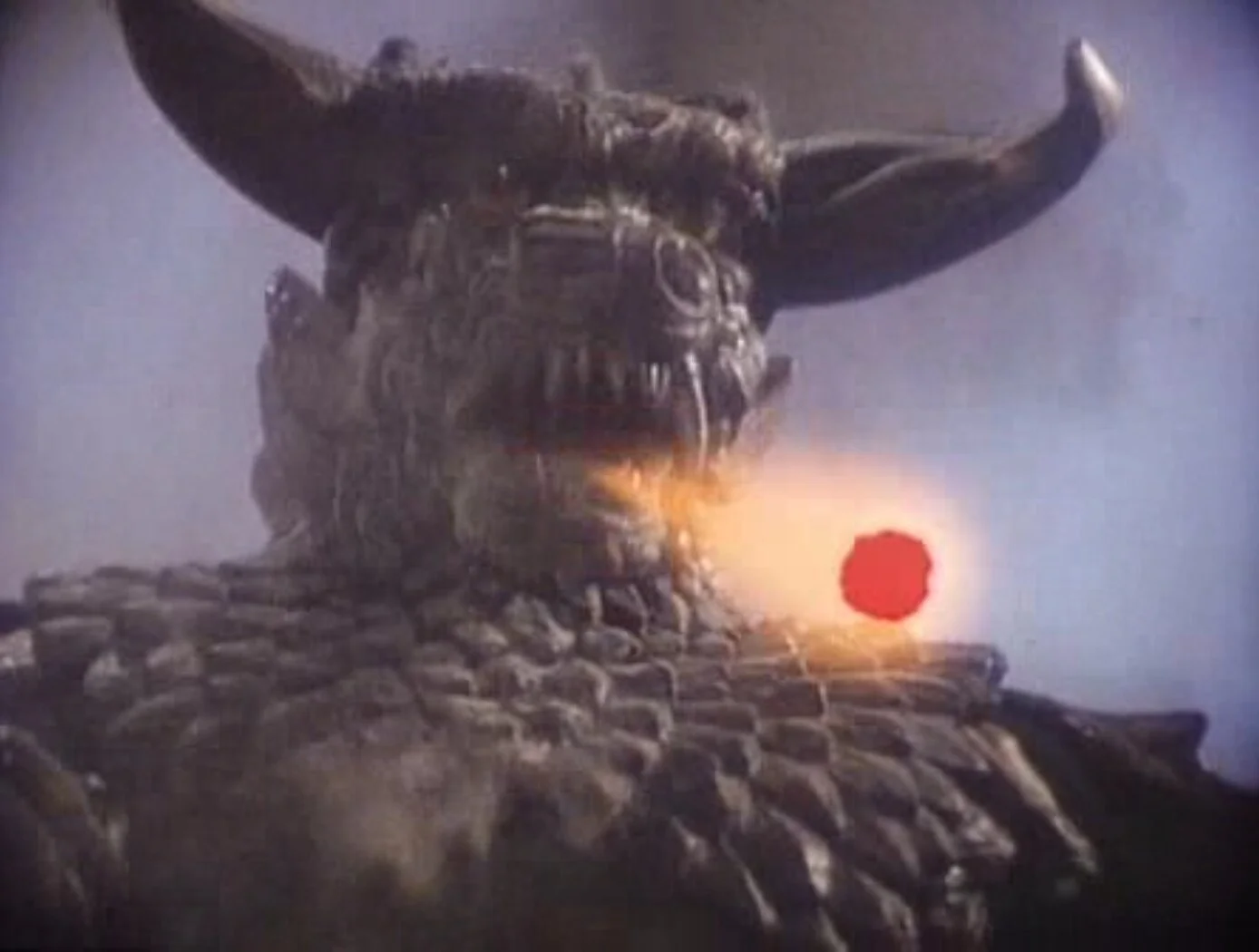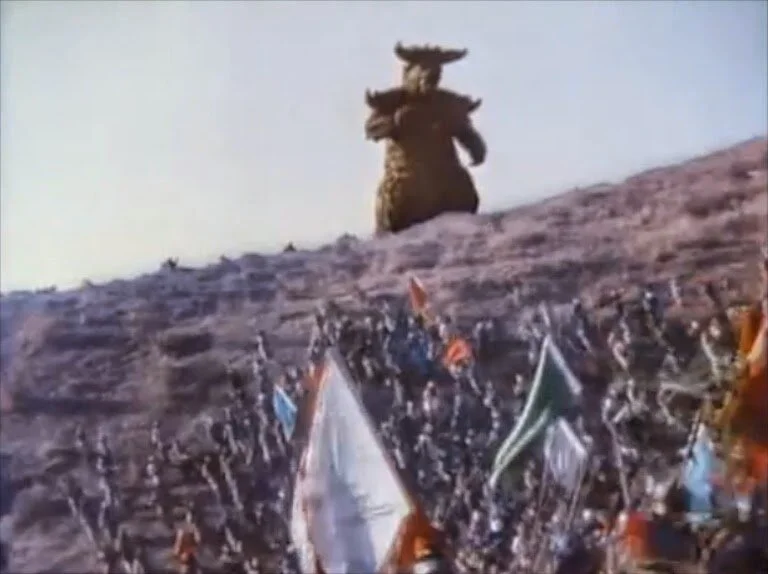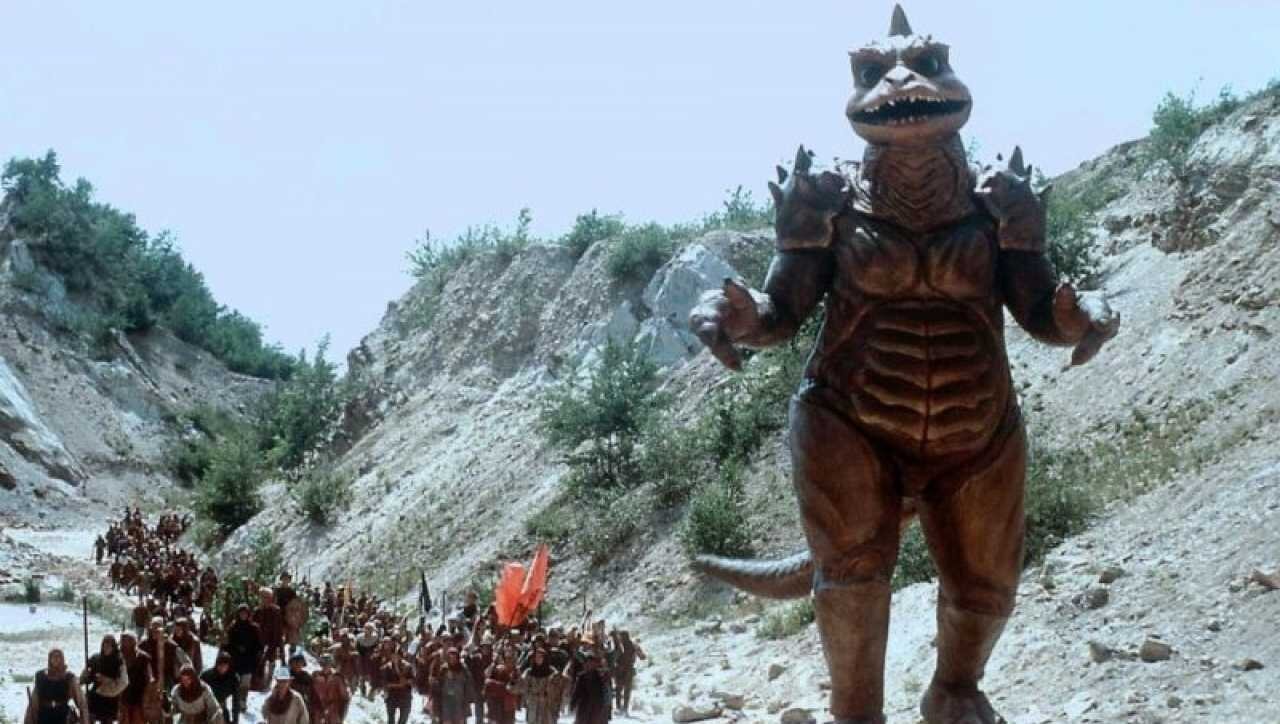PULGASARI (1985) and GALGAMETH (1996)
Some movies only exist as a hazy or abstract notion. Heard of only in passing and whispers. They're occasionally also the answer to a trivia question some weird cinephile is thrilled to toss out. That's the nether realm where PULGASARI and GALGAMETH roam. Bound together by a wild true story, they're films that are entirely consequential in their own, but still an altogether interesting footnote. Well, As far as Kaiju films go, that is.
Back in 1978, South Korean actress Choi Eun-hee was kidnapped by North Korean agents. Six months later, her former husband director Shin Sang-ok was also kidnapped and relocated to North Korea. Both incidents were the machinations of Kim Jong-il, the eventual Supreme Leader of North Korea but in 1978 was simply the director of the Motion Picture & Arts Division of the Propaganda and Agitation Department. For years Jong-il felt that the movies he was making were too stiff and dull, due to laziness of the crew. The natural solution was to kidnap people who could make things better.
After several missteps, Jong-il implored Sang-ok to make a Kaiju film. One that could potentially impress westerners, presumably to globally spread some nationalist message or at least satiate his ego. To ensure guaranteed success, Jong-il went about hiring Toho's special effects teams that had worked on the latest Godzilla films—including the Kaiji master himself, Kenpachiro Satsuma. Words cannot truly encompass how important the casting is, giving gravitas to the production. (It’s important to note that the Toho crew only signed up as they were led to believe they were making a film in China, and not some piece of muddled North Korean propaganda)
For the most part, both films follow the same pattern. In a pastoral land back in a distant age, farmers and villagers have started to take up arms against the Monarchy. With spirits wavering and the outlook grim, a creature of legend enters the fray to turn the tide. That's it. How the films go about viewing the king, how the Kaiju appears (both entering the film, as well as physical appearance), and how the ragtag rebels plot and fight to survive is where the differences start to show.
The act of watching PULGASARI and GALGAMETH is an interesting study in comparing conflicting ideals and compromised filmmaking. Neither version feels completely the work of its creator, with Sang-Ok's back against the wall in both situations. In a bid to actually receive credit for the work he wrote, he has to adopt an Americanized pseudonym. It's also more than a little surprising to discover it was the more dangerous and scrutinized production that comes out on top.
The thrust of PULGASARI follows a blacksmith and his daughter caught up in the throes of revolution in the 1300s. When a family friend is revealed to be a captain of rebels, the blacksmith is thrown into jail, for defending him. With his dying breath, the blacksmith makes a figurine out of rice and prays that the gods will bring it to life and protect the rebels (most often referred to as "bandits").
The moment said figurine comes into contact with the blacksmith's daughter, the mythical creature Pulgasari is born. The cute little tyke immediately showcases a fondness for metal and chops away at anything he comes into contact with. The benefit being that it causes him to grow from the size of a child to the monstrous proportions befitting the most mammoth of Kaiju.
Armed with Pulgasari and his willingness to do whatever the blacksmith's daughter is asked and whatever the rebels ask her to ask Pulgasari to do, they lead a march to the capital city.
Along the way feeding more and more of the army's dwindling weapon pile to the fierce Kaiju, in hopes of making him unstoppable. As simplistic as the setup is, it's the execution that sells it. Sang-ok stages everything with the efficiency of a historical epic.
The sheer number of extras crammed in the frame is impressive, as is the chaos that unfolds during battles. Chaos is the operative word, for as enthralling as it all is, there's a slapdash nature to it too.
The middle of the film is where the meat of the entertainment lies. Swinging wildly from goofy beats to thrilling showdowns. Several of the highlights are unexpected descents into darkness. Such as a bloodied Pulgasari pulling ancient missile spears (yes, that's right) out of his eye and body. As well as an extended exorcism, attempting to separate the blacksmith's soul from the giant beast's. Without these and several smaller instances, the whole of the film would be lesser. The crazier beats are fun and their meshing with the large-scale battles is essential. It might not be your traditional Kaiju movie, yet that's exactly what makes it worth watching.
Because of the crazy (and illegal to the point of being tantamount to war) lengths that Kim Jong-il went through, PULGASARI ends up being far more accomplished and better than it should be. The titular Kaiju is impressive, going through its various stages of evolution and eventually laying waste to everything around him.
Compared to some of the more traditional entities (Mothra, Godzilla), Pulgasari is on-screen for a fair amount of time which benefits greatly by having Satsuma in the creature's suit. There's even a focus on how soft and gentle the Kaiju can be, as evidenced by when he decimates a forest, in order to gather wood for the rebels.
As enjoyable as the film is, there's admittedly a good deal of clunkiness here.
Most notably in the clashes felt between theme and story. It's another case of context being king. Jong-il sought to make a propaganda film that showcases what his people were capable of (through a foreign filmmaker and a foreign special effects team) and shows the dangers of how capitalism and consumerism would lead to destruction (even though a team of scrappy rebels defeats the dictator).
What he got was something beyond his wildest dreams. A film that became immortal and part of history, even if for the wrong reasons.
11 years after PULGASARI was released, GALGAMETH (aka THE LEGEND OF GALGAMETH, aka THE ADVENTURES OF GALGAMETH) burst onto the scene, backed by little fanfare. When Shin Sang-Ok and Choi Eun-hee managed to flee to America, Kim Jong-il stripped their credits from the movies they'd made while captive. In a bid to reclaim his work, Sang-ok developed a new story based on his old film, this time under the pseudonym of Simon Sheen. Strangely, that was Sang-Ok's only contribution to the film, even though just two years prior he had directed 3 NINJAS KNUCKLE UP. Yes, a political dissident involved in one of the most contentious ongoing border disputes in the world escaped his kidnappers and made the most lackluster entry in the 3 NINJAS franchise. What a world we live in.
It's hard to say if his involvement behind the camera would have helped GALGAMETH, but everything, including the Kaiju element, is a bit off.
Set in medieval times, though largely no one has an accent, Prince Davin (Devin Oatways) finds himself in a situation where only a legendary creature can save him. After his father mysteriously dies, Davin entrusts the most senior knight of the court, El El (Stephen Macht), to take care of things as he grieves. That's a bad choice as El El is super evil and longs to be a tyrant. As evidenced by his first decision being to outlaw dogs from the kingdom and set fire to all the books. When Davin learns of the treachery, he's tossed out of the castle and left for dead. Armed only with his family's legendary dragon (which was hidden inside a gift from his dad), who grows with the more metal he consumes, they'll have to fight to save the day.
Anyone well-versed in children's entertainment of the '90s (especially of the DTV variety) knows what to expect with GALGAMETH.
All the performances are over-the-top. All obstacles are easily overcome. There isn't a piece of drama that feels more than paper-thin, nor are there any characters developed beyond one trite quirk.
Out of all the actors (including Doug Freakin’ Jones), Macht makes the biggest impression, by trying to chew as much scenery as possible. The mere fact that there's a giant "dragon" creature at the center is what makes it stand out. So naturally, they do some really, really weird things with "Galgy", as every character annoyingly refers to him.
It's the strange beats that are scattered throughout GALGAMETH that help it marginally have a "so good it's bad" flavoring. Galgy's early incarnation looks to be a rendering of what someone on acid vaguely remembered what the baby from Dinosaurs looked like.
A particularly inspired beat sees the titular creature trapped inside a church, engulfed in flames. Rather than perish, Galgy breaks through the rubble to reveal an evolved state that's magma-esque in appearance and able to breathe fire. The downside of which is that he stops through a forest and burns it all down, while everyone cheers on the sidelines.
In a move that was both unexpected and welcomes, both movies allow the brunt of important beats to rest on the backs of strong and empowered women.
Though they're sadly still at the whims of stupid or short-sighted men. Nevertheless, it's still nice to see their inclusion be such a focus. It's quite literally the backbone of GALGAMETH, with Davin's love interest Julia literally the one who teaches him to use a sword and believe in himself. Whereas PULGASARI sees the blacksmith's daughter as both the force that can control the beast, as well as the one to sacrifice herself in order to stop him.
The more that time trudges along, the more film history is littered with all kinds of crazy tales that end up as mere footnotes. Both GALGAMETH and PULGASARI are Kaiju movies likely lost to time, save for their connection to that time the son of a dictator kidnapped an actress and filmmaker, in hopes of leaving a cinematic stamp. In the case of GALGAMETH, it's not too much of a loss. PULGASARI, though, is the kind of movie that, were it to be given a decent restoration and release, would find a massive cult following. Only time will tell if it eventually gets that reappraisal.




